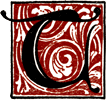E-text prepared by Barbara Tozier, Bill Tozier,
and the Project Gutenberg Online Distributed Proofreading Team
()
FROM XYLOGRAPHS
TO LEAD MOLDS
AD 1440 AD 1921

Copyright, 1921
The Rapid Electrotype Company
Cincinnati, Ohio
FOREWORD
Printing has been called “the artpreservative of all arts.” The inventionof individual movable cast-metaltype, between A. D. 1440 and 1446, madeprinting a commercial possibility.
The subsequent rapid spread of the art, inthe hands of students and craftsmen, may besaid to have been the centrifugal force of theRenaissance and the Revival of Learning,which age, if it can be chronologically delimited,began A. D. 1453.
Printing divulged to the masses the ancientclassics which had been locked up in monasteriesand accessible only to clerics and thenobility. The common people began to read.Education became popularized.
This brochure is a brief history of theevolution from xylographs to the methodsused today for duplicating a typographicalprinting surface in a solid piece.
INDIVIDUAL
MOVABLE CAST-METALTYPE

The art of writing, and that of printingfrom wooden blocks, and all the subsidiaryarts of illuminating, decoratingand binding manuscripts and books,had long passed out of the exclusivehands of the monasteries into the handsof students and artisans, before printing with individualmovable cast-metal type was invented. This epochmaking invention came into practical use between A. D.1440 and 1446.
When, therefore, Johannes Koelhoff of Lubeck, Germany,printed the “Cologne Chronicle” in 1499, heused individual movable cast-metal type. Typographicprinting had long before superseded Xylographic printing,that is, printing from a solid block of wood on which typeof an entire page were cut individually by hand.
Between the invention of individual movable cast-metaltype and the perfection by the Earl of Stanhope ofhis printing-press, (a period of about three hundred andsixty years), very few improvements had been made inthe mechanics of printing. Everything we know todayabout the art has come into use since 1799, and if Koelhoffhad come to life in 1799 and been permitted toresume his occupation of printer, he would have foundhimself practically familiar with the mechanical equipment of his craft as used in the establishment of theStanhope Press in that last year of the eighteenth century.
Centuries before 1440 printing is believed to havebeen attempted in China; presumably about the beginningof the Christian era. It is said that in the yearA. D. 175 the text of the Chinese classics was cut intotablets which were erected outside the national universityat Peking, and that impressions—probably rubbings—weretaken of t